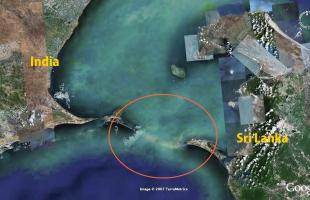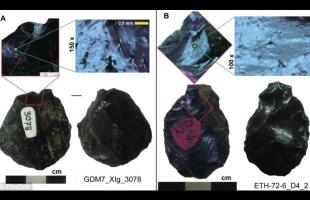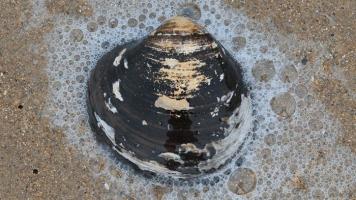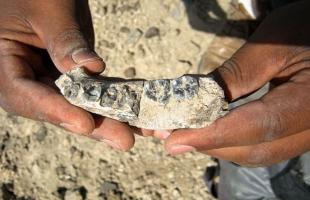Copy Link
Add to Bookmark
Report
The Basix Fanzine issue 01

-------------------------------------------------------------------------
BBBB A SSS I CCCC
B B A A S S I C C The BASIC Internet Fanzine
B B A A S I C ==========================
BBBB A A SSS I C
B B AAAAA S I C Written by and updated by Peter Cooper
B B A A S S I C C of PECO Software
BBBB A A SS I CCCC
-------------------------------------------------------------------------
Enquiries\support: peter@trenham.demon.co.uk
Articles: bmag@trenham.demon.co.uk
INTRODUCTION:
This is the promised first edition of the BASIC Internet Fanzine.
I hope you'll find it useful in some way or another as the purpose of the
fanzine is to inform BASIC programmers of techniques,books,other peoples
BASIC tricks and more. If you have any comments on this fanzine then you
are invited to e-mail to the e-mail addresses above.
-------------------------------------------------------------------------------
- CONTENTS PAGE ---------------------------------------------------------------
-------------------------------------------------------------------------------
CONTENTS:
SECTION ONE) - [MAIN ARTICLES]
|
+----- i) Knox Press - 'The Revoloutionary Guide to QBasic'
|
+----- ii) Ping Pong game source code
SECTION TWO) - [TEACHING ZONE]
|
+----- i) Screen mode 13 and what you can do
|
+----- ii) Programming the SB card
SECTION THREE) - [YOUR SHOUT!]
|
+----- i) Questions and Answers
|
+----- ii) The Discussion: PowerBasic or QBasic
|
+-----iii) Your programs
SECTION FOUR) - [DETAILS ABOUT THE FANZINE]
|
+----- i) How do you contribute?
|
+----- ii) How do you contact the author?
|
+-----iii) Credits
|
+----- iv) Last words + next month
+++++++++++++++++++++++++++++++++++++++++++++++++++++++++++++++++++++++++++++++
-------------------------------------------------------------------------------
- SECTION ONE -----------------------------------------------------------------
-------------------------------------------------------------------------------
+++++++++++++++++++++++++++++++++++++++++++++++++++++++++++++++++++++++++++++++
Main Articles:
This first section contains the articles that people have wanted to put into
this fanzine plus some forthcoming work from Knox Press and a beginners guide
to BASIC.
-------------------------------------------------------------------------------
- SECTION ONE PART I - (Revoloutionary guide to QBasic) -----------------------
-------------------------------------------------------------------------------
Implementing a Stack in QBasic
------------------------------
Before we write a program that involves a stack, we must first decide which
QBasic tools we'll use to implement it. Because we can manipulate the elements
quite straightforwardly with an array, this is perhaps the best choice for us
to make. However, we can only have a bounded stack now since the dimensions
of our array will limit the depth of the stack.
Let's see how a stack operates. The value of the function EmptyStack is True
if the stack is empty, otherwise it's False. The function OutStack pops an
element off the stack and takes its value. The procedure InStack (x) pushes
the element x onto the stack. An array STACK containing 100 elements is
allocated to hold the elements of the stack.
Here's our example for the bounded stack:
' PROGRAM 6.1
' *******************************************
' * The Demonstration of a Bounded Stack *
' *******************************************
' The program firstly pushes NS sequential natural numbers
' onto the stack, then pushes OS numbers from the stack and
' outputs them onto the screen (NS and OS are defined by the user).
DECLARE FUNCTION EmptyStack! ()
DECLARE SUB InStack (X!)
DECLARE FUNCTION OutStack! ()
DIM SHARED DeepStack, TopStack
CONST True = -1
CONST False = NOT True
' *** Initialization of the stack ***
DeepStack = 100 'defining the depth of the stack
DIM SHARED Stack(DeepStack) 'defining the array for the stack
TopStack = 0
' ******* Demonstration of a Stack Operation *******
CLS
PRINT "Demonstration of a Bounded Stack"
PRINT " (stack's depth - 100)"
PRINT
INPUT "Number of elements to push onto the stack? "; NS
' *** Filling the Stack ***
FOR I = 1 TO NS
CALL InStack(I)
NEXT I
' *** Popping Elements from the Stack ***
INPUT "Number of elements to pop from the stack? ", OS
FOR I = 1 TO OS
IF NOT EmptyStack THEN
X = OutStack
PRINT X;
ELSE
PRINT : PRINT "Stack is empty! ";
PRINT I; "- th element cannot be retrieved."
EXIT FOR
END IF
NEXT I
END
FUNCTION EmptyStack
IF TopStack = 0 THEN
EmptyStack = True
ELSE
EmptyStack = False
END IF
END FUNCTION
SUB InStack (X)
IF TopStack = DeepStack THEN
PRINT "Error: Stack is overfilled!"
STOP
ELSE
TopStack = TopStack + 1
Stack(TopStack) = X
END IF
END SUB
FUNCTION OutStack
IF TopStack = 0 THEN
PRINT : PRINT "Error: Stack is empty!"
STOP
ELSE
OutStack = Stack(TopStack)
TopStack = TopStack - 1
END IF
END FUNCTION
The code first asks you for the number of elements you want the stack to contain
, and when it receives an answer ns, it fills the stack with the numbers 1 to
ns. If ns is greater than 100, you'll see a display of the overflow message
and the program will stop. Otherwise, you'll be asked how many elements you want
to pop off the stack and the retrieved elements will be output to the screen.
If you want more elements than the stack contains, after the last element is
retrieved a message will appear on the screen telling you that it's impossible
to pop the next element because there aren't any left in the stack.
This sample was taken from the forthcoming book, `The Revolutionary
Guide to QBasic', published by Wrox Press, e-mail adrians@wrox.com or
check-out our web-page http://www.wrox.com/ for further details.
Thanks to Wrox Press and Adrian Sill who is an editor for the book and will
kindly donate articles to issues of the fanzine. This book looks and sounds
good with not just beginners questions in it. It's THE book for the BASIC
programmer. Thank you.
-------------------------------------------------------------------------------
- SECTION ONE PART II - (Ping Pong Source Code) -------------------------------
-------------------------------------------------------------------------------
We don't know why but we all had a competition here to see who could write
a sort of PING-PONG game compatible with different screen modes in 30 mins.
Here's the result and it works.
(SMALL COMPETITION ALERT: If you can fit this into less lines of code or
improve it then you will be deemed a good basic programmer and don't use
colons to squash it up!)
RANDOMIZE TIMER
DIM SHARED vx%(1 TO 8), vy%(1 TO 8)
vx%(1) = 0:vy%(1) = -1:vx%(2) = 1:vy%(2) = -1:vx%(3) = 1:vy%(3) = 0:vx%(4) = 1
vy%(4) = 1:vx%(5) = 0:vy%(5) = 1:vx%(6) = -1:vy%(6) = 1:vx%(7) = -1:vy%(7) = 0
vx%(8) = -1:vy%(8) = -1
score% = 0:life% = 5
redos:
bx% = 48:by% = 30 ' BALL X+Y START COORDS
bbx% = 48
bby% = 92
SCREEN 13 ' CAN BE 12,9,7,10 etc..
CLS ' TRY IT!
WINDOW SCREEN (-10, -10)-(110, 110) ' MAP PIX RANGES TO ANY SCR.
' DRAW THE ARENA
LINE (0, 0)-(100, 100), 15, B:LINE (-2, -2)-(102, 102), 15, B
PAINT (-1, -1), 15:LINE (0, 100)-(100, 100), 12
LINE (0, 0)-(100, 100), 15, B:LINE (0, 100)-(100, 100), 12
d% = 5 ' STARTING BALL DIRECTION , 5 is DOWN
' 1 is UP, 3 is RIGHT,4 is DOWN-RIGHT GEDDIT?
LOCATE 1, 1
PRINT "lives: "; life%
DO
LINE (ox%, oy%)-(ox% + 1, oy% + 1), 0, BF
LINE (bx%, by%)-(bx% + 1, by% + 1), 14, BF
ox% = bx%:oy% = by%
bx% = bx% + vx%(d%):by% = by% + vy%(d%)
LINE (bbx%, bby%)-(bbx% + 11, bby% + 1), 10, BF
a$ = INKEY$
IF a$ = "z" AND bbx% <> 2 THEN
LINE (bbx%, bby%)-(bbx% + 11, bby% + 1), 0, BF
'bbx% = bx% - 2
bbx% = bbx% - 2
LINE (bbx%, bby%)-(bbx% + 11, bby% + 1), 10, BF
END IF
IF a$ = "x" AND bbx% <> 88 THEN
LINE (bbx%, bby%)-(bbx% + 11, bby% + 1), 0, BF
bbx% = bbx% + 2
LINE (bbx%, bby%)-(bbx% + 11, bby% + 1), 10, BF
END IF
FOR delay = 1 TO 50
NEXT delay
' DETECTION OF WALLS ROUTINE
IF POINT(bx% + 4, by%) = 15 THEN ' hit right wall
IF d% = 2 THEN d% = 8 ' CHANGE DIRECTIONS
IF d% = 4 THEN d% = 6
IF d% = 3 THEN d% = 7
GOTO ok1:
END IF
IF POINT(bx% - 2, by%) = 15 THEN ' hit left wall
IF d% = 8 THEN d% = 2 ' CHANGE DIRECTIONS
IF d% = 6 THEN d% = 4
IF d% = 7 THEN d% = 4
GOTO ok1:
END IF
IF POINT(bx%, by% - 2) = 15 THEN ' hit top wall
IF d% = 1 THEN
g% = INT((10 - 1) * RND + 1)
IF g% > 8 THEN d% = 4
IF g% = 7 THEN d% = 6
IF g% < 7 THEN d% = 5
GOTO ok1:
END IF
g% = INT((10 - 1) * RND + 1)
IF g% > 7 THEN d% = 4
IF g% < 8 THEN d% = 6
GOTO ok1:
GOTO ok1:
END IF
IF POINT(bx%, by% + 3) = 10 THEN ' hit bat
LINE (0, 0)-(100, 100), 15, B
LINE (0, 100)-(100, 100), 12
score% = score% + 50
IF d% = 5 THEN
g% = INT((10 - 1) * RND + 1)
IF g% > 8 THEN d% = 8
IF g% = 7 THEN d% = 2
IF g% < 7 THEN d% = 1
GOTO ok1:
END IF
IF d% = 4 THEN d% = 2: GOTO ok1:
IF d% = 2 THEN d% = 8: GOTO ok1:
g% = INT((10 - 1) * RND + 1)
IF g% > 5 THEN d% = 1
IF g% < 6 THEN d% = 2
GOTO ok1:
GOTO ok1:
END IF
IF POINT(bx%, by% + 3) = 12 THEN ' hit bottom wall
IF life% = 1 THEN
SCREEN 0
WIDTH 80, 25
COLOR 7, 0
CLS
PRINT "Thanks for playing Peters PINGPONG"
PRINT "Score: "; score%
a$ = INKEY$
a$ = INPUT$(1)
SYSTEM
END IF
life% = life% - 1
LOCATE 1, 1
PRINT "lives: "; life%
GOTO redos:
END IF
ok1:
LOOP
I know it's very sloppy but for 30 mins it isn't too bad! Try and learn
something from it or improve it! (shouldn't be too hard! :-) )
+++++++++++++++++++++++++++++++++++++++++++++++++++++++++++++++++++++++++++++++
-------------------------------------------------------------------------------
- SECTION TWO -----------------------------------------------------------------
-------------------------------------------------------------------------------
+++++++++++++++++++++++++++++++++++++++++++++++++++++++++++++++++++++++++++++++
Teaching Zone:
The second section is here to teach you Basic techniques and tricks and helps
you to use them in your programs. In this fanzine there are tutorials telling
you how to program fast graphics in screen mode 13 and what it it is and also
how to program a SB from Basic!
The BASIC these tutorials are in is MS PDS 7.1 and the code is compatable with
QBasic. If the code is in a different version than QBasic then it is stated
clearly at the start.
-------------------------------------------------------------------------------
- SECTION TWO PART I - (Screen mode 13 and what you can do) -------------------
-------------------------------------------------------------------------------
Hi. Have you ever wanted to write fast graphics routines but in BASIC? BASIC
is not really a language designed to do fast graphics but there are ways to
get around sluggish graphics systems. In this tutorial I am going to go into
how to draw pixels on a screen mode 13 screen in the small space of this
fanzine I have had allocated.
Screen mode 13 is what most fast graphics games used. I must say used because
the latest games such as TRANSPORT TYCOON and SIMCITY 2000 use high-res screens
a lot of the time. Games such as SF2 and DOOM still use the lower-res screens
though. To access screen 13 in QBasic is simple. Just use the following:
SCREEN 13
CLS
That'll get you a nice clean mode 13 screen and you can draw on it at pixel
100,100 in color 56 using the PSET command as the following:
PSET (100,100),56
But if you use the previous to draw many pixels then it will be quite slow.
How can you make it faster?
The way to do it is write direct to the video memory. Hard? Nope.
Screen Mode 13 memory is arranged like the following:
bytes\/
+---+---+---+---+---+---+---+--- ...........................
| 1 | 2 | 3 | 4 | 5 | 6 | 7 | 8 goes on for 320 pixels --->
+---+---+---+---+---+---+---+--- ...........................
|321|322|333|334|335|336|337|338
+---+---+---+---+---+---+---+--- The last pixel on the screen is byte
|641|642|643|644|645|646|647|648 value 64000
..............||................
\/
goes down for 200 pixels
Sorry about the ASCII graphics! :-) Basically this all means that you can
write to pixel 2,2 by writing a colour value to byte number 322 (look on the
chart). The formula to convert an x,y value to a byte number is the following:
b = x + ( y * 320 )
So if the x,y value are 100,100 then
b = 100 + (100 * 320)
b = 100 + 32000
b = 32100
To write to that position the following code is needed:
x=100:y=100 ' can't be integers
poke x+(y*320),c% ' c% is the color value
First though we need to define the segment to write to as the video memory.
We do this by DEFining the SEGment as &HA000. This makes:
DEF SEG=&HA000
Now here is a full program:
DEF SEG=&HA000
SCREEN 13
CLS
PRINT "Graphics demo"
x = 100
y = 100
c% = 12
POKE x+(y*320),c%
SYSTEM
This program will draw a bright red pixel to position 100,100 on the screen.
BTW, you can't use integers as the positions for y values over 101 because
there is an overflow because of the math. Anyway around this without using
real numbers or long integers. They're so sloooow!
I know this tutorial has been brief but there is not much room in the fanzine!
Never mind. :-)
-------------------------------------------------------------------------------
- SECTION TWO PART II - (Programming the SB card) -----------------------------
-------------------------------------------------------------------------------
On the comp.lang.basic.misc and alt.lang.basic newsgroups there are regularly
questions like ' How do program a SB from Basic? ' or 'How I detect an SB
port address' or 'WAV FILES: playing through SB?' etc.
This tute should address many of the problems faced by BASIC programmers.
PROGRAMMING THE SB
==================
Programming the SB is quite simple but the timing is the hard bit so I'm
going into that in this tutorial. I'll just show you how to reset the card
, turn the speaker on and produce a square-wave tone.
The SB is controlled by a chip called the DSP (this is the Digital Sound
Processor) and this is what we use in this tutorial. Before we can send
raw data for the card to sound we need to reset the card.
' START OF RESET SECTION
OUT &H226, 1: OUT &H226, 0 ' steps 1+2
DO
x% = INP(&H22E) ' step 3
IF x% AND 128 THEN ' step 4
x% = INP(&H22A) ' step 5
IF x% = &HAA THEN ' step 6
PRINT "reset!"
EXIT DO
END IF
END IF
LOOP
That bit of program will reset the card. Here is what it does:
1 - Send a 1 to the reset port (2x6h)
1a - wait 3 microseconds. basic is so slow that i havn't had to bother
2 - Send a 0 to the reset port (2x6h)
3 - Poll the data ready port (2xEh)
4 - If the 7th bit is not set then goto 3
5 - Poll the data port (2xAh)
6 - If it returns h0AA then you're done otherwise go back to step 3
You should do this up to 100 times. If it doesn't work by then then the port
address is wrong or the card is faulty.
(NOTE: where I put &H226 or &H22E is for a 220 based card. For a 240 they
would be &H246 or &H24E OK?)
OK. So now we've reset the thing but we still cannot send data because you
won't hear it! The speaker has not been turned on.
(The first time I programmed the SB, I didn't turn it on and I had to turn the
speakers full up to hear anything. I went mad to find the solution!)
The way we turn it on is to program the DSP with the hex byte D1. A sample
is shown below.
' TURN SPEAKER ON
DO
x% = INP(&H22C)
LOOP WHILE x% AND 128
OUT &H22C, &HD1 ' send speaker on code
Before the byte can be sent we have to check if the SB is ready to get it.
That's what the DO...LOOP does. So now the SBs speaker is on.
Now we can send raw data to the card. But before each byte is sent we need
to send 10 hex to tell the SB it is sound data we are doing.
DO
FOR g% = 100 TO 1 STEP -1 ' START OF LOOP
OUT &H22C, &H10 ' send
OUT &H22C, f% ' send no.
FOR aa% = 1 TO 100: NEXT aa% ' delay
IF f% = 255 THEN f% = 0 ELSE f% = 255 ' alternate between 0 and 255
NEXT g% ' END OF LOOP
LOOP
The f% is the value that is the sound on the sound wave. BTW, if you want to
play WAV,VOC or RAW files what you need to do is read a byte from the file
each time and send it to the card after sending the &H10. More about that, in
the next fanzine. (but you might work it out from I just said ,by then)
Here's the full program that produces a tone by alternating from 0 to 255 and
back. Change the aa% loop for a different pitched note.
' START OF RESET SECTION
OUT &H226, 1: OUT &H226, 0
DO
x% = INP(&H22E)
IF x% AND 128 THEN
x% = INP(&H22A)
IF x% = &HAA THEN
PRINT "reset!"
EXIT DO
END IF
END IF
LOOP
' END OF RESET SECTION
' TURN SPEAKER ON
DO
x% = INP(&H22C)
LOOP WHILE x% AND 128
OUT &H22C, &HD1 ' send speaker on code
DO
FOR g% = 100 TO 1 STEP -1 ' START OF LOOP
OUT &H22C, &H10 ' send
OUT &H22C, f% ' send no.
FOR aa% = 1 TO 100: NEXT aa% ' delay
IF f% = 255 THEN f% = 0 ELSE f% = 255 ' alternate between 0 and 255
NEXT g% ' END OF LOOP
LOOP
Hope that's useful.
+++++++++++++++++++++++++++++++++++++++++++++++++++++++++++++++++++++++++++++++
-------------------------------------------------------------------------------
- SECTION THREE ---------------------------------------------------------------
-------------------------------------------------------------------------------
+++++++++++++++++++++++++++++++++++++++++++++++++++++++++++++++++++++++++++++++
Your Shout:
This is the part of the fanzine where your letters,views and ideas will be
published unless something is eligible for the other sections.
-------------------------------------------------------------------------------
- SECTION THREE PART I - (Questions and Answers) ------------------------------
-------------------------------------------------------------------------------
E-mail your BASIC problems and get an answer (hopefully) :
~~~~~~~~~~~~~~~~~~~~~~~~~~~~~~~~~~~~~~~~~~~~~~~~~~~~~~~~~~~~~~~~~~~~~~~~~~~~~~~
QUESTION From : John Woodgate
Answers Reply-To: john@nmr.sbay.org
1) - How do I access SB's speech driver?
2) - How do I store a 1 meg file in mem and access it linerarly?
3) - How do I parse a script command, such as:
a$ = MID$(LEFT$(t$, 10), ASC(RIGHT$(r$, 2)), VAL(MID$(s$, 3, 1))
I need to know what the final values of everything is, then execute the
command...
4) - What is the extra seat for in my F16 model?
ANSWER FROM : Peter Cooper (peter@trenham.demon.co.uk)
1) I presume you mean the talker SBTALKER that Dr. Sbaitso (SB demo) uses.
To access the driver is very,very difficult without the SB Development
Kit. With that you can just type
STSAY "Hello, I'm talking"
Call Creative Labs for prices of the kit. I got mine at a computer rally
for 3pounds (about $6\7!)
There is a low-level way but it is near to impossible to do in BASIC.
If anyone wants the psuedo-code of how to do it then I'll be happy to
put it in the next fanzine or e-mail it. I'm currently working on the
problem in BASIC and if I get a finished program then it will be in
the next fanzine.
2) 1MB? This is another impossibility unless you use XMS or EMS which
will be discussed in the next fanzines theme of 'Low level routines'
3) I don't quite understand but I think you may be trying to chop up a
string and get values and bits of text from it. Lets say I have a
string like:
ABF1987J-L and I wanted to get the two bits
of text and the number.
use this code:
arg1$ = left$(a$,3)
arg2% = val(mid$(a$,4,4))
arg3$ = right$(a$,3)
Or are you trying to write a sort of BASIC interpreter? I have some
experience in that and I'll be happy to help.
4) For a driver to put their laptop on!
~~~~~~~~~~~~~~~~~~~~~~~~~~~~~~~~~~~~~~~~~~~~~~~~~~~~~~~~~~~~~~~~~~~~~~~~~~~~~~~
QUESTION FROM : Various people (about 5)
Where do I get fanzines and when are they released?
ANSWER FROM : Peter Cooper (peter@trenham.demon.co.uk)
The Basic FANZINE is available on the 12th of every month on the following
newsgroups unless another day is stated (on the newsgroups):
alt.lang.basic
comp.lang.basic.misc
There is to be a PASCAL Fanzine released in December also. This will be on
the relevant PASCAL groups TBA.
~~~~~~~~~~~~~~~~~~~~~~~~~~~~~~~~~~~~~~~~~~~~~~~~~~~~~~~~~~~~~~~~~~~~~~~~~~~~~~~
QUESTION FROM: Various
How can I play a WAV file from QBasic? You can't. Well not perfectly unless
you write a few hundred lines of code and spend a few hours. This question
was a last minute one and as such is quite a quick program using our original
SB reset program.
TYPE wave
byte AS STRING * 1
END TYPE
DIM SHARED w AS wave
' START OF RESET SECTION
OUT &H226, 1: OUT &H226, 0
DO
x% = INP(&H22E)
IF x% AND 128 THEN
x% = INP(&H22A)
IF x% = &HAA THEN
PRINT "reset!"
EXIT DO
END IF
END IF
LOOP
' END OF RESET SECTION
' TURN SPEAKER ON
DO
x% = INP(&H22C)
LOOP WHILE x% AND 128
OUT &H22C, &HD1 ' send speaker on code
OPEN "c:\windows\tada.wav" FOR BINARY AS #1
bpos% = 1
DO
OUT &H22C, &H10 ' send
GET #1, bpos%, w.byte
bpos% = bpos% + 6 ' make digit higher for speed
f% = ASC(w.byte)
OUT &H22C, f% ' send no.
LOOP UNTIL EOF(1)
CLOSE #1
The quality is very very poor. You can only just hear the Windows TADA tune
when you run this on my machine. Try compiling it if you have QuickBasic or
PDS, it goes faster. BTW, try changing the bpos% increase variable to get a
different sampling\play rate (different sound resoloutions)
By next fanzine I'll have something 100 times better than this. Just you see.
So get it then.
~~~~~~~~~~~~~~~~~~~~~~~~~~~~~~~~~~~~~~~~~~~~~~~~~~~~~~~~~~~~~~~~~~~~~~~~~~~~~~~
-------------------------------------------------------------------------------
- SECTION THREE PART II - (PowerBasic or QBasic) ------------------------------
-------------------------------------------------------------------------------
This is the big question. Which programming language does the beginner use?
POWERBASIC or QBASIC
Your views are needed for this. I believe that QBasic is better because it's
cheaper (free) than PowerBasic but you really do have to pay to get quality
and with PowerBasic you get a fast\good compiler. What do you think?
I'll take votes on bmag@trenham.demon.co.uk - A 'P' for Power or 'Q' for
Q(uick)Basic
Please make the subject 'VOTE'
So far the totals rest at:
66.6% - Microsoft BASICS - QBasic,QuickBasic,PDS 7.1
33.3% - Power BASIC
BTW, I've only got 3 votes ATM.
-------------------------------------------------------------------------------
- SECTION THREE PART III - (Your Programs) ------------------------------------
-------------------------------------------------------------------------------
In this part of the zine you get to display your BASIC programs and functions.
You can send in tricks and tips for BASIC too!
Our first program ties in with our Teaching Zone article, Sound Blaster
setup. It was sent in by John Woodgate (john@nmr.sbay.org).
DECLARE SUB DetectSB (IsThere%, CardType%, address%)
' Call SUBROUTINE TO DETECT SB
CLS
DetectSB a%, b%, c%
PRINT "Is there a card? ", a%
PRINT "What type? ", , b%
PRINT "What port address? ", HEX$(c%)
DEFINT A-Z
SUB DetectSB (IsThere%, CardType%, address%)
FOR a = &H210 TO &H280 STEP &H10
OUT a + 6, 1
ts! = TIMER
DO: LOOP UNTIL TIMER - ts! >= .01
OUT a + 6, 0
tl! = TIMER
DO
tmp% = INP(a + 14)
Tmp2% = tmp% AND &H80
IF Tmp2% = 0 THEN EXIT DO
LOOP UNTIL TIMER - tl! >= .01
Tmp3% = INP(a + 10)
IF Tmp3% = &HAA THEN
IsThere% = -1: address% = a: GOSUB WhatKind: EXIT SUB
END IF
ts! = TIMER
DO: LOOP UNTIL TIMER - ts! >= .01
NEXT
EXIT SUB
WhatKind:
OUT a + 12, &HE1
tl! = TIMER
DO
tmp% = INP(a + 14)
Tmp2% = tmp% AND &H80
IF Tmp2% = 0 THEN EXIT DO
LOOP UNTIL TIMER - tl! >= .01
Tmp1% = INP(a + 10)
Tmp2% = INP(a + 10)
CardType% = Tmp1%
RETURN
END SUB
The cardtype comes up as 4 for the AWE32. Could you test it on your SB? What
are the numbers for SB2,SB16 or maybe even a GUS? e-mail answers please.
Thanks for that John.
+++++++++++++++++++++++++++++++++++++++++++++++++++++++++++++++++++++++++++++++
-------------------------------------------------------------------------------
- SECTION FOUR ----------------------------------------------------------------
-------------------------------------------------------------------------------
+++++++++++++++++++++++++++++++++++++++++++++++++++++++++++++++++++++++++++++++
Details about the fanzine:
This section of the fanzine is the last. It covers topics such as how to get
in touch with the author,who contributed to the fanzine and my last words.
-------------------------------------------------------------------------------
- SECTION FOUR PART I - (How do you contribute?) ------------------------------
-------------------------------------------------------------------------------
So how do you contribute?
All you have to do is e-mail to:
bmag@trenham.demon.co.uk - with contributions and articles
peter@trenham.demon.co.uk - with enquiries, etc..
Please make articles less than 100 lines long unless you've made special
arrangements with me of course. :-). In fact unless the article explains
itself then it may be better to e-mail to the support address and tell me
what the article is about first.
Thank you.
-------------------------------------------------------------------------------
- SECTION FOUR PART II - (How do you contact the author?) ---------------------
-------------------------------------------------------------------------------
If you want to ask me a question about BASIC or the fanzine then please e-mail
to the support address and I'll be only too pleased to answer although please
understand that you may not get an instant reply because my local mailserver
may break down (not rare) or I may be busy with other things. I'll respond ASAP
If you have something to share with everyone then post onto the alt.lang.basic
or comp.basic.misc newsgroups (I read the latter most). Make the subject good
as I don't read a lot of the articles straight away because of the titles
although I do read them eventually.
-------------------------------------------------------------------------------
- SECTION FOUR PART III - (Credits) -------------------------------------------
-------------------------------------------------------------------------------
A very big thanks to:
John Woodgate , who has contributed greatly
Adrian Sill , from Wrox Press who has supported the fanzine and
who has contributed from their forthcoming book
and hopefully will do in the next fanzine
all the other people who have contributed and posted ideas
Remember that this fanzine needs you, to contribute.
-------------------------------------------------------------------------------
- SECTION FOUR PART IV - (Last Words+Next month) ------------------------------
-------------------------------------------------------------------------------
NEXT MONTH:
ARTICLES:
Possibly another Wrox Press article and a rundown on their
book.
Reversi game source code (if i get it finished)
WAV file player (better than the current crappy one)
TEACHING ZONE:
Writing a compiler\interpreter - PART 1 OF 4
Accessing low-level computer functions
Drawing lines and the algorithms
YOUR SHOUT:
All of your news + views
A lowlevel CMOS reader program (in QBASIC!)
DETAILS ABOUT THE FANZINE:
How to contact us.
Rundown on the Jan 1996 fanzine.
Hopefully out for 12th December 1995.
Last words:
Well thanks for reading and I've hoped you've enjoyed this first
fanzine and even if you didn't it's going to get better as people send their
ideas in for entry into the fanzine. So get writing (or typing as the case
might be!) and send in articles,ideas and tips and tricks for the fanzine.
Everything is looked at and everyone gets a reply!
Any ideas about the fanzine can be posted to me at the following address:
peter@trenham.demon.co.uk
Any material for the Basic Fanzine:
basmag@trenham.demon.co.uk
Thank you for reading and I promise I've got tons more stuff for the second
fanzine. The next will have far more useful stuff in it. I'm snowed under
with peoples great programs! Keep sending them.



















